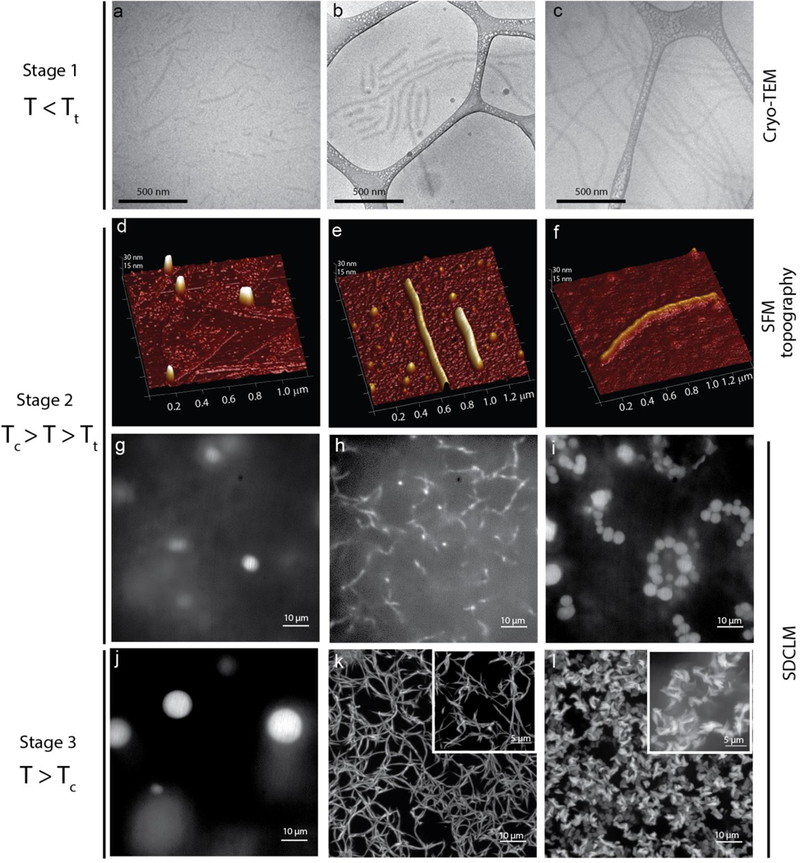Figure 4.

Characterization of the morphology of the FAME aggregates and visualization of their temperature-triggered phase transition and self-assembly across different length scales and temperatures. a-c, Cryo-TEM of the FAMEs dissolved in PBS at 20 °C (T < Tt): M-B1-ELP (a), M-B2-ELP (b), and M-B3-ELP (c), showing cylindrical micelle morphology with an average length increasing with the β-sheet-formation propensity of the PA-domain. d-f, SFM topography of the FAMEs, drop cast from solution at 30 °C (Tc > T > Tt): M-B1-ELP (d), M-B2-ELP (e), and M-B3-ELP (f), showing that FAME nano-aggregates are rod-like polymeric micelles and fibers. g-l, M-B1-ELP transitions into liquid coacervates at 30 °C (g) that remain stable up to 50 °C (j) but reach a larger equilibrium volume. M-B2-ELP transitions into a network of fibers above Tt (h). At higher temperatures (T > Tc), these fibers form a stable interconnected network of fibers (k). Above Tt, M-B3-ELP forms a “beads-on-a-string” morphology that is likely due to the arrested coalescence of the initial liquid coacervates (i). Above Tc, these droplets form fractal-like amorphous aggregates (l). The inset in k and l provide a higher magnification obtained using the super-resolution mode of the microscope.
